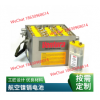Warehouse to Warehouse Coverage
Generally the cargo insurance offers coverage to shipments while they are being transited. The coverage begins as the consignment leaves the shipper’s warehouse and ends after it reaches its destined consignee’s warehouse as long as the follow the pre determined course of transit.
However, in case of some situations like:
The sale or purchase term is determined when the insurance is in effect.
The insurance policy may be ceased when the consignment is loaded off the conveyance or the conveyance arrives at the terminal or port
The insurance is not in effect until the cargo is not loaded on the conveyance.
The insurance coverage may not come in to effect if the cargo isn’t shipped by the conventional methods or it the cargo is just picked and delivered by the shipper or the consignee.
Why do you need Cargo Insurance
The cargo insurance safeguards the importers and exporters from unlimited financial risk that their consignments may be exposed to if not optimally covered. It is a daunting as well as time consuming task to claim compensation for the losses from the carriers. The best way that can save the shippers is to opt for“All-Risk” coverage for their cargo while transits as the carriers have very limited responsibility.
Limited Liability of the carriers
The Hague/COGSA, framed down during the post World War 1 period, was conceived to safeguard the interest of the vessel owner against legal responsibilities towards the shippers for some unfavorable circumstances. The Carriage of Goods by Sea act or COSGA limits the liabilities of the vessel owners to US$500 per shipping unit. It also acts in relieving the carriers from any legal liability to the shippers in 17 unfavorable situations that is mentioned in the Hague/COSGA Defenses. This means the vessel owner cannot be held responsible legally by the shippers when their consignment is damaged or lost by the causes mentioned in the Hague/COSGA Defenses.
The Hague/COSGA Defenses
The vessel or the vessel owner will not be help responsible for the losses or damages caused by:
Any act of neglect of the part of the mariners, master, servants or the pilot of the carrier in navigating or managing the vessel.
Fire, which is not caused because of the fault in the vessel.
Perils of the sea
Act of war
Act of God
Act of public enemies
Restraint or arrest of political rulers or leaders or seizure taking place under legal process
Quarantine restrictions
Any act of the shipper, the owner of the consignment, his representative or agent.
Civil tumult or riots
Strikes, lockouts, labor restraints.
In a life or property saving act in the sea.
Inherent vices
Improper or faulty packaging
Inadequate marks
Hidden defects that cannot be discovered easily
Any other cause for which the carrier or the owner of the vessel cannot be held responsible.
Limited Liabilities of the Air Freight Carriers
For protecting the air freight carrier against the liabilities to the shippers, the Warsaw Convention was created. The air carrier’s liabilities are restricted to US$9.07 per pound for international freight and $0.50 per pound for domestic cargo unless subjected to Montreal Protocol no. 4. In order to recover the actual cost of their lost or damaged goods the shippers sometimes decide to declare value with the air freight carriers. In spite of declaring the value recovering the losses is still time a consuming and difficult procedure.
Declared value vs. “All Risks” policy
Declaring value is very much different than offering insurance coverage for freight transit. If a shipper decide to make a claim against the carrier he has to prove the liability of the carrier in the damaging the freight. This makes the process more time consuming and troublesome. Whereas the “All Risks” policy offers coverage to the shipper against physical damage of the cargo by any external agents mentioned under the terms and conditions of the policy. The shipper need not require to prove the liability of the carrier in order to get coverage.
Cargo Insurance Claims
The problem that lies with the cargo insurance claim is the ignorance of the claimants about establishing claim. This often creates a great tumult in the process of documentation. This section is developed keeping these factors in mind. Here are some important guidelines that are to be followed while you establish a cargo insurance claim.
The damaged consignment ownership
Most assured think that the damaged consignment is automatically titled to the insurance company have do not have any further interest in the same. But this is totally a wrong conception and any one who establishes a claim based on this concept is clearly making his/her right vulnerable. The freight belongs to the assured and he/she is the one who bears the loss incurred to the freight. The insurance company is not entitled to claim the position of the consignment neither it can be an associate to the agreement of the carriage within the terms of the bill of landing. The insurance company is only responsible for taking up claims against the freight carriers after confirming that the loss has been compensated under the policy. The consignment always belongs to the assured and only in few special cases the insurance company may agree to take its responsibility or sell it.
“onus of Good Faith”
The assured must take every required action that can minimize the chances of a loss or damage to the cargo and has no right to dessert any consignment. In other words the assured need to act in the same way as he/she might have done if they have been uninsured. This is the “onus of good faith” which acts as a guideline for all insurance.
Reducing A Know Loss
Some assured may interrogate about the right of incurring an expense for diminishing a probable loss before the insurance company’s authority is received for incurring the same expense. If the expense is reasonably relative to the amount of the loss that is being tries to avoid, the insurance company will compensate for those expenses. This is covered under the “sue and labor” clause for almost all marine policies.
Modus operandi
It’s important to contact your freight forwarder or broker when you have any questions about how to proceed.
You require to prepare an initial claim form and send it to your forwarder for their signature. In case of a pilferage or damage a survey needs to take place. However, any amount under $500.00 has no requisition for a survey. If any damage is detected the unloading must be stopped before a decision may be reached about the requirement of a survey. Any exterior containers should not be discarded as they may play an important role in the survey. Not abiding to these instructions may lead to disruptions in the future recovery.
Corroborate your claim
The most important part of the claim procedure is to substantiate the claim. The freight owner must prove the loss that was caused resulted due to the transit and occurred during the period of the policy coverage. The following steps are important and are recommended to be followed.
Scrutinize the peripheral conditions of the package
Examine the outer condition of the package before you sign the delivery receipt. It helps to protect your right to recover and minimize your losses.
Record the exceptions on the receipt of delivery.
It is absolute mandatory for the carrier companies whether airline, trucking or railways to obtain a delivery receipt from the consignee upon the delivery of the consignment. Every receipt has a clause that the freight was delivered in an “apparent good condition”.
If the consignee, the receiving department or the cartage company signs the receipt without recording the damages, your insurance coverage is at risk. Signing the delivery receipt means that you are accepting the fact that the consignment was delivered in “apparent good condition”, demolishing your chance to prove that the damage was caused to your goods before it reached your premises and also paralyze the chances of your insurance company to recover the loss from your carrier.
It is a known tactics of the trucking company to try and convince the consignee that the damage was caused by the custom inspection or the damaged package was signed from the wharf etc. These claims should not be entertained; you need to know that the consignee is the sole decider here.
If the carrier tries to prevent you from signing the delivery receipt you should ask the trucker to hold back the consignment and should request your insurance company to send a surveyor to inspect the goods on the trucker’s vehicle. You have the right to deny your carrier if he ask you to sign for a damaged cargo as “subject to inspection”. This statement does not confirms that the package was damaged and you jeopardize your chances of recovering your losses from your freight forwarding company.
Note the number of packages
Remember to record the number of the damaged packages. It is not worth to make a note like” Five Cases Damaged”. You should note down the number printed on each case that appears to be damaged.
document the claim
It is very important to place all carriers “on notice” along with noting the delivery receipt. The payment from the carriers should never be accepted without consulting the insurance company, failing to which will not only disrupt the insurance company’s right of subrogation but also a provision of your coverage that may prejudice the outcome of the claim.






